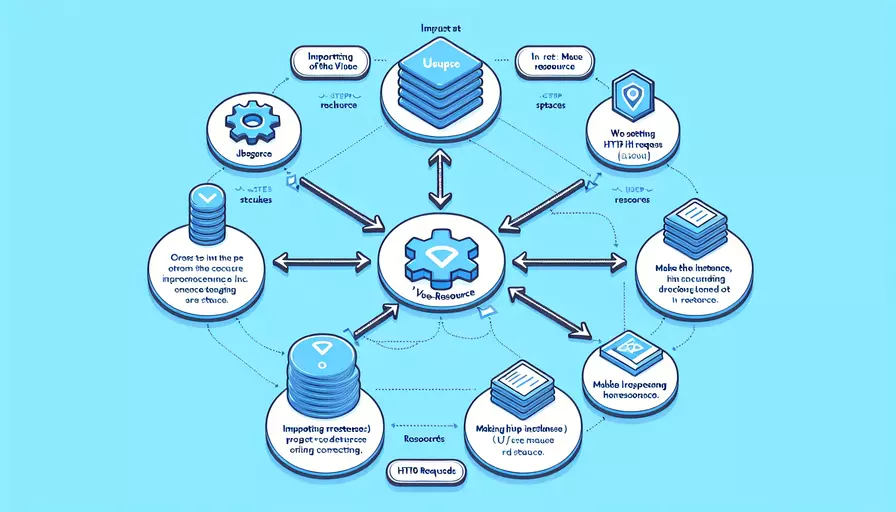
Vue-resource 的使用可以分为以下几个步骤:1、安装和引入 vue-resource;2、在 Vue 实例中使用;3、发起 GET 请求;4、发起 POST 请求;5、处理响应数据。 Vue-resource 是 Vue.js 的一个插件,用于处理 HTTP 请求,具有简洁易用的 API,适合进行前后端数据交互。下面详细介绍如何使用 vue-resource。
一、安装和引入 vue-resource
首先,我们需要安装 vue-resource 插件。你可以使用 npm 或 yarn 进行安装:
npm install vue-resource --save
或者
yarn add vue-resource
安装完成后,在你的 Vue 项目中引入 vue-resource,并进行全局注册:
import Vue from 'vue'
import VueResource from 'vue-resource'
Vue.use(VueResource)
二、在 Vue 实例中使用
注册完成后,vue-resource 将会添加一些方法到 Vue 实例中。常用的方法有 $http.get 和 $http.post,用于发起 GET 和 POST 请求。
new Vue({
el: '#app',
data: {
info: null
},
methods: {
fetchData() {
this.$http.get('https://api.example.com/data')
.then(response => {
this.info = response.body;
}, response => {
console.error('Error:', response);
});
}
}
});
三、发起 GET 请求
GET 请求通常用于获取数据。在 vue-resource 中,发起 GET 请求的语法如下:
this.$http.get('https://api.example.com/data')
.then(response => {
// 成功处理响应
console.log(response.body);
}, response => {
// 处理错误
console.error('Error:', response);
});
四、发起 POST 请求
POST 请求通常用于向服务器发送数据。在 vue-resource 中,发起 POST 请求的语法如下:
this.$http.post('https://api.example.com/data', { key: 'value' })
.then(response => {
// 成功处理响应
console.log(response.body);
}, response => {
// 处理错误
console.error('Error:', response);
});
五、处理响应数据
在获取到响应数据后,我们可以根据需要对数据进行处理。vue-resource 提供了 response.body 来获取响应的主体内容。
this.$http.get('https://api.example.com/data')
.then(response => {
this.info = response.body;
}, response => {
console.error('Error:', response);
});
六、配置全局选项
vue-resource 允许配置一些全局选项,例如设置根 URL、请求头等:
Vue.http.options.root = 'https://api.example.com';
Vue.http.headers.common['Authorization'] = 'Bearer token';
七、使用拦截器
拦截器可以在请求或响应被处理之前进行一些操作,例如添加全局的错误处理或请求日志:
Vue.http.interceptors.push((request, next) => {
console.log('Request:', request);
next(response => {
if (!response.ok) {
console.error('Response error:', response);
}
});
});
八、处理不同的响应格式
vue-resource 支持处理 JSON、Blob 等不同的响应格式:
this.$http.get('https://api.example.com/data', { responseType: 'json' })
.then(response => {
this.info = response.body;
}, response => {
console.error('Error:', response);
});
总结和建议
vue-resource 是一个强大的 HTTP 请求插件,可以简化与服务器的交互过程。通过了解和掌握其安装、引入、发起请求、处理响应等基本用法,你可以在 Vue 项目中高效地进行数据操作。进一步建议:
- 熟悉 API 文档:深入阅读 vue-resource 的官方文档,了解更多高级用法。
- 结合实际需求:根据项目需求,灵活使用拦截器、全局配置等功能。
- 注意安全性:在处理敏感数据时,确保请求和响应的安全性,比如使用 HTTPS、添加必要的验证机制。
通过这些步骤和建议,你可以更好地在你的 Vue 项目中使用 vue-resource 进行 HTTP 请求处理。
相关问答FAQs:
1. Vue-resource是什么?
Vue-resource是一个基于Vue.js的HTTP请求库,用于在前端应用中进行网络请求。它提供了一种简洁、灵活的方式来处理HTTP请求和响应,使得与后端服务器进行数据交互变得更加方便。
2. 如何使用Vue-resource发送GET请求?
要使用Vue-resource发送GET请求,首先需要在项目中安装vue-resource包。可以通过npm或yarn来进行安装,命令如下:
npm install vue-resource
或
yarn add vue-resource
安装完成后,在Vue.js的入口文件中引入vue-resource:
import Vue from 'vue'
import VueResource from 'vue-resource'
Vue.use(VueResource)
然后,在需要发送GET请求的组件中使用Vue-resource的this.$http.get()方法来发送请求,例如:
export default {
created() {
this.$http.get('/api/data')
.then(response => {
// 处理响应数据
})
.catch(error => {
// 处理错误
})
}
}
在上面的示例中,/api/data是要请求的接口地址。then方法用于处理成功的响应,catch方法用于处理错误。
3. 如何使用Vue-resource发送POST请求?
发送POST请求与发送GET请求类似,只是需要使用this.$http.post()方法,并且传递要发送的数据作为第二个参数。例如:
export default {
methods: {
postData() {
const data = {
name: 'John',
age: 25
}
this.$http.post('/api/data', data)
.then(response => {
// 处理响应数据
})
.catch(error => {
// 处理错误
})
}
}
}
在上面的示例中,/api/data是要请求的接口地址,data是要发送的数据对象。
除了get和post方法外,Vue-resource还提供了其他方法来发送不同类型的请求,如put、delete等。可以根据实际需求选择合适的方法来发送请求。
总结一下,使用Vue-resource发送HTTP请求的步骤是:安装vue-resource包,引入vue-resource,使用this.$http来发送请求,然后通过then和catch方法处理响应和错误。
文章标题:vue-resource如何使用,发布者:飞飞,转载请注明出处:https://worktile.com/kb/p/3631232

 微信扫一扫
微信扫一扫  支付宝扫一扫
支付宝扫一扫 